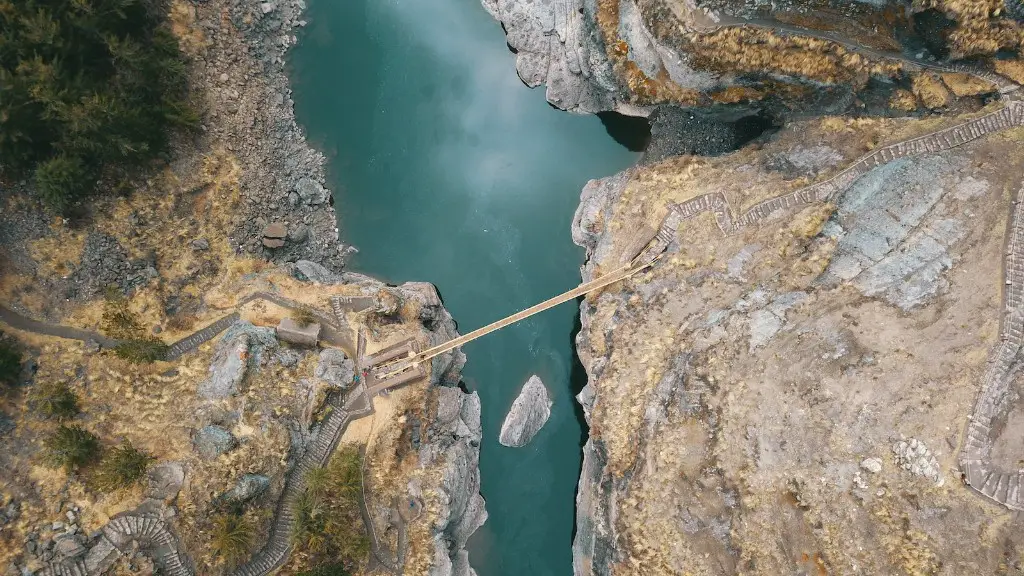The Mississippi River is one of the most revered and powerful waterways in America and the world. Every year, millions of people travel to its banks and streams or to the larger rivers it feeds into. Unfortunately, this beautiful body of water is often plagued by environmental problems caused by pollution coming from various sources including municipal and industrial waste. Of these pollutants, one of the most pervasive and difficult to contain is garbage and its effects on the Mississippi River and its tributaries.
Garbage affects the Mississippi River in a number of ways, most of which negatively impact the health of the river, its wildlife, and the people who rely on it. For starters, everyday pollution like plastic bottles, Styrofoam packaging, and other toxins released into the river through runoff can gradually build up, culminating in an ecological disaster. This can indicate poor water quality, lead to algal blooms, and contain microplastics and chemicals that are hazardous to humans, animals, and plant life.
Also, as litter accumulates around the Mississippi, it can clog up or cause blockages in dams, power stations, and locks, which can disrupt the river’s water flow and interfere with navigation. Likewise, large pieces of hard plastic and other garbage can support the spread of invasive species that disrupt the food chain, introducing new predators and competition to sensitive ecosystems.
Fortunately, there are a number of actions that individuals and organizations can take to help protect the Mississippi River from pollution and waste. Promoting awareness about the consequences of excessive littering, organizing large-scale clean-up initiatives, and participating in recycling and composting programs are just a few of the many ways to make a lasting difference. And with the right attitude, these efforts can make an even bigger impact.
Although the effects of garbage on the Mississippi River are clearly detrimental, it’s important to remember that they aren’t impossible to combat. By taking a proactive approach to reducing the amount of waste entering the river and inspiring others to act, citizens can work together to ensure the Mississippi River remains a source of life and prosperity for years to come.
The Impact of Litter
The most obvious consequence of garbage is its impact on the environment: As plastic bottles, cans and other items accumulate, they can block waterways, choke and injure plant and animal life, attract insects and carry diseases, and cause an increase in harmful algal blooms in coastal areas. None of these things are good for the plants, animals, and people that depend on the Mississippi River for life. Additionally, the presence of litter near the riverbanks can have a serious impact on the aesthetic of the area, detracting from its beauty and diminishing the recreational activities people might otherwise be able to enjoy.
The litter around the Mississippi also poses a danger to people. Larger pieces of hard plastic can get stuck in propellers and other engine parts, which can cause boats to break down and leave their passengers stranded. Trash in the water can also entangle swimmers, animals looking for food, and birds trying to migrate.
The effects of this kind of litter don’t end there: when plastic breaks down, it releases toxic chemicals into the water, endangering the lives of both wildlife and humans. These chemicals can cause a variety of serious health issues, from cancer to reproductive disorders. Sustainable alternatives, such as compostable packaging, should be used instead of non-biodegradable materials, like Styrofoam.
The Role of Governance
At the state and federal level, lawmakers can and must do more to protect the Mississippi River and its tributaries, such as by enacting strict regulations on the types of materials, such as plastic and Styrofoam, that can be used in packaging and packaging waste. They also must increase funding and resources for organizations that monitor and enforce these regulations. What’s more, they must support education and outreach programs that encourage the responsible disposal of trash near the Mississippi. An example of this is the RiversRide Clean Campaign that was launched in partnership with the US Coast Guard, which is an effort to raise awareness about the dangers of improper disposal of waste near the river.
In addition, local and regional governments must also take action to reduce the amount of solid waste in their communities. This can include implementing curbside collection programs, promoting waste-reduction initiatives such as composting, and encouraging the use of reusable products and packaging. Furthermore, cities and counties should also consider establishing trash-free zones around the Mississippi River in which all litter is prohibited.
At the same time, businesses must do their part to protect the Mississippi by carefully considering the materials they use to package their products. Whenever possible, they should opt for reusable or recyclable items, utilizing sustainable materials such as paper and cardboard, rather than plastic and Styrofoam.
Ultimatley Responsibility
Ultimately, responsibility for keeping the Mississippi free of pollution lies with all of us. We must all do our part to ensure that our communities are free of waste and that the river itself is kept clean and healthy. Whether it’s supporting the organizations in your area that are working to clean up the river or advocating for environmental policies that protect it, there are plenty of ways to get involved. Even small actions, such as picking up litter in parks, can have a positive impact on the Mississippi and its tributaries.
The most important thing to remember is that it’s never too late to make a difference. With the right mindset, combined with the dedication and commitment to do better, it’s possible to restore the Mississippi River to its former glory and ensure its health and longevity for future generations.
Innovative Solutions
In addition to reducing our own waste, there are several innovative solutions that citizens can use to make a larger impact on protecting the Mississippi River. For instance, organizations like the Mississippi River Fund are working on projects to reduce sediment runoff, restore wetlands, manage flooding, and increase public awareness of issues related to the river’s health. Additionally, scientists are testing new technologies like shoreline stabilization systems, wetland restoration projects, and trash trapping systems to help keep trash and other pollutants out of the Mississippi.
Over the years, there have also been numerous technological developments that have made the process of cleaning up the River more efficient. For example, drones have been used to survey the river and its tributaries and robots have been used to detect and remove trash. These advances have made it easier for researchers and organizations to track and study the health of the River and its associated ecosystems.
Finally, there are a number of small steps citizens can take to reduce their environmental impact, such as using reusables and avoiding single-use plastics, packaging small items in reusable containers, bringing their own bags to the grocery store, and buying local produce when possible. All of these steps can contribute to a healthier, cleaner Mississippi.
Community Efforts
There are numerous grassroots efforts to restore the health of the Mississippi River and its tributaries. For instance, volunteer-led organizations like the Great River Rescue and other Mississippi River Basin cleanup initiatives organize clean-up projects throughout the year, bringing together citizens of all ages, backgrounds, and levels of experience to help keep the river clean.
Other non-profits, such as the Mississippi River Audubon Society, are dedicated to restoring and conserving wildlife habitats along the Mississippi. They work to protect and create functioning ecosystems and promote sustainable use of the river and its resources. Meanwhile, the Mississippi River Network partners with local and national project managers, experts, and organizations to reduce pollution and protect the river. Through its efforts, it has been successful in advocating for the passage of several policies related to the waterway and its tributaries.
Ultimately, the health of the Mississippi River and its tributaries depends on the willingness of citizens to take action and do their part. Through education, outreach, and grassroots initiatives, we can start to restore the river’s health and make a difference for future generations.




